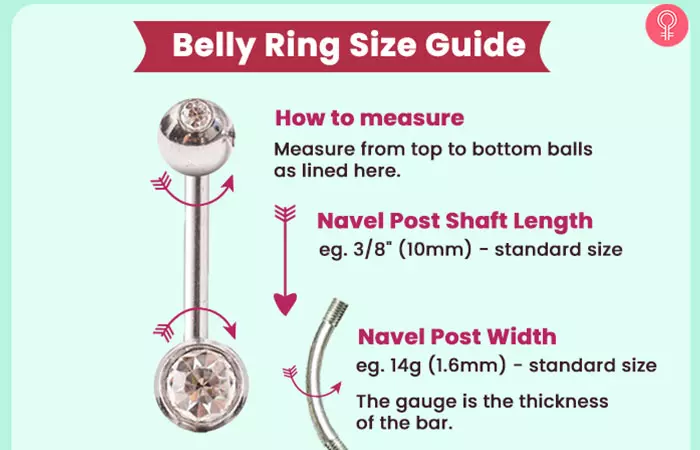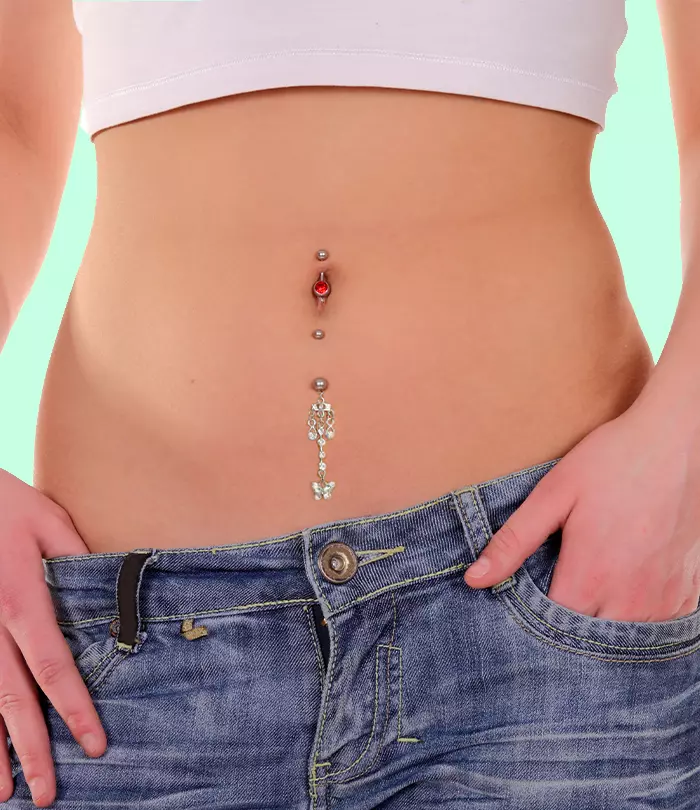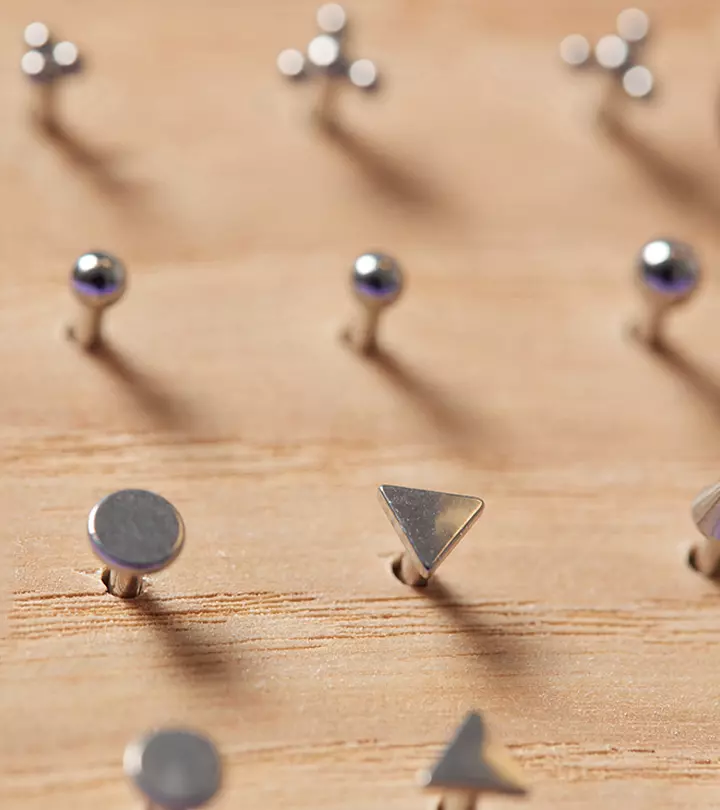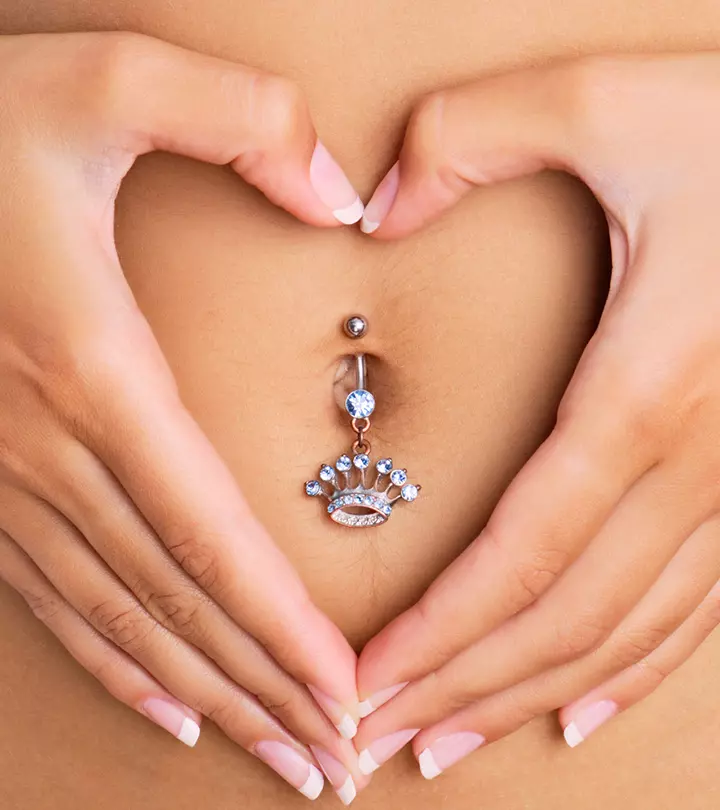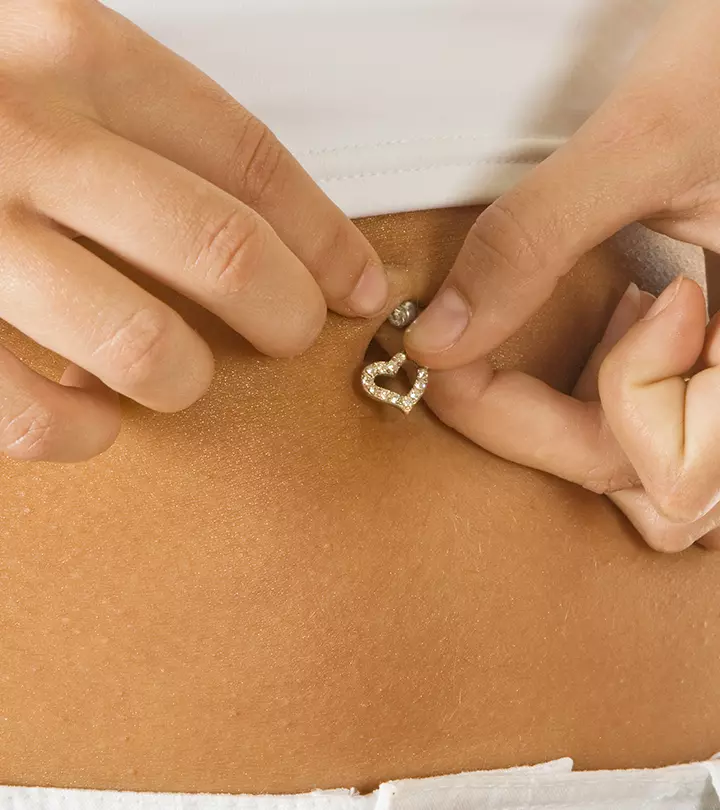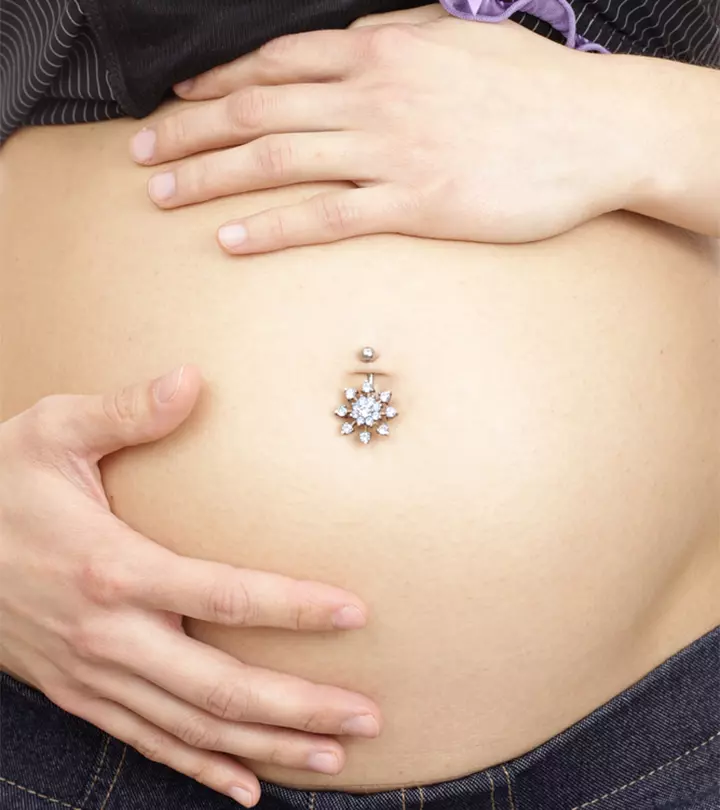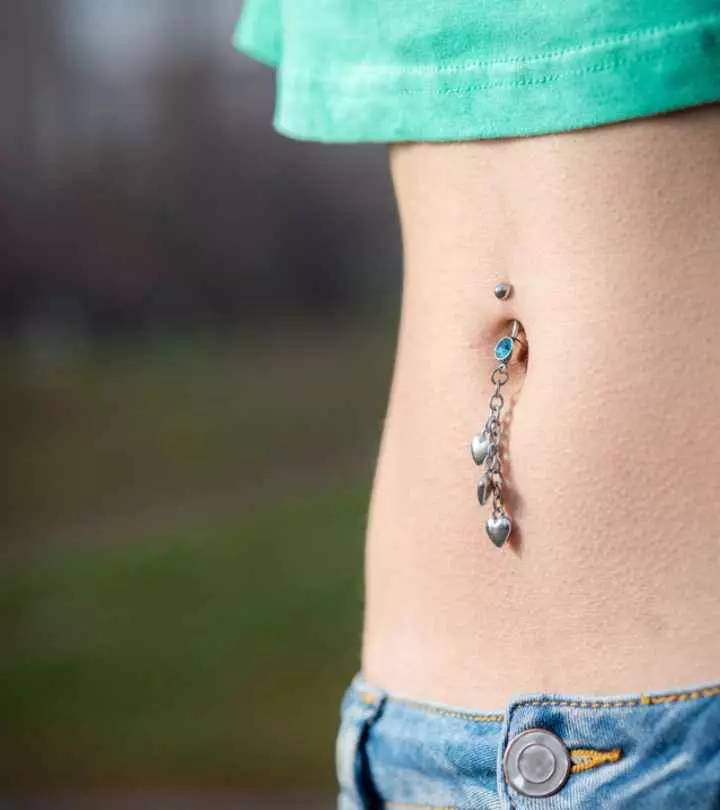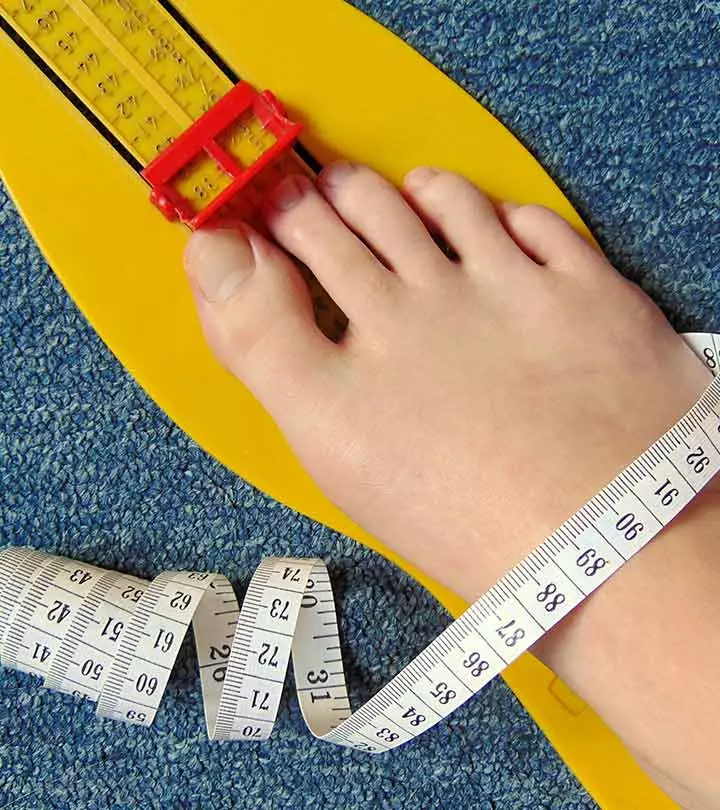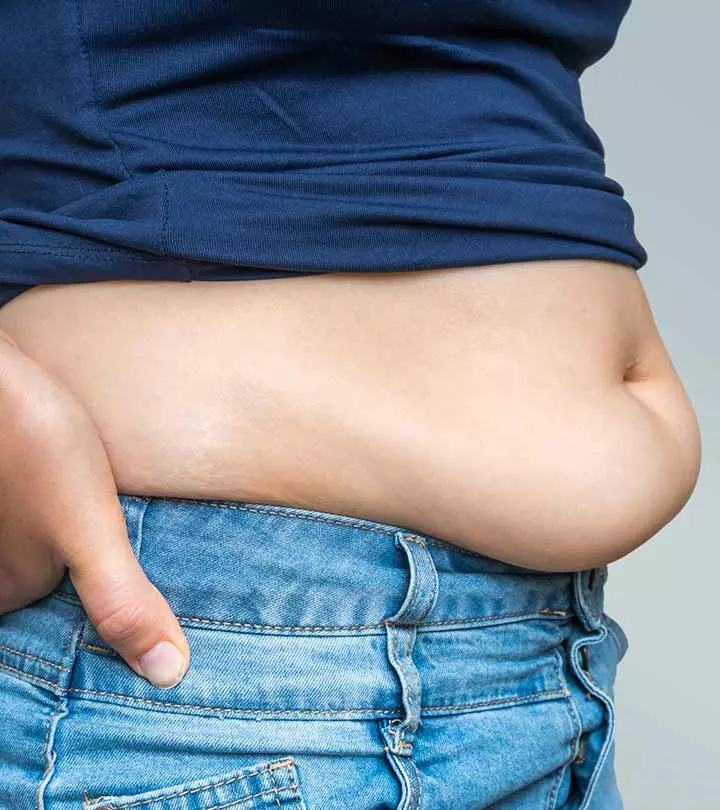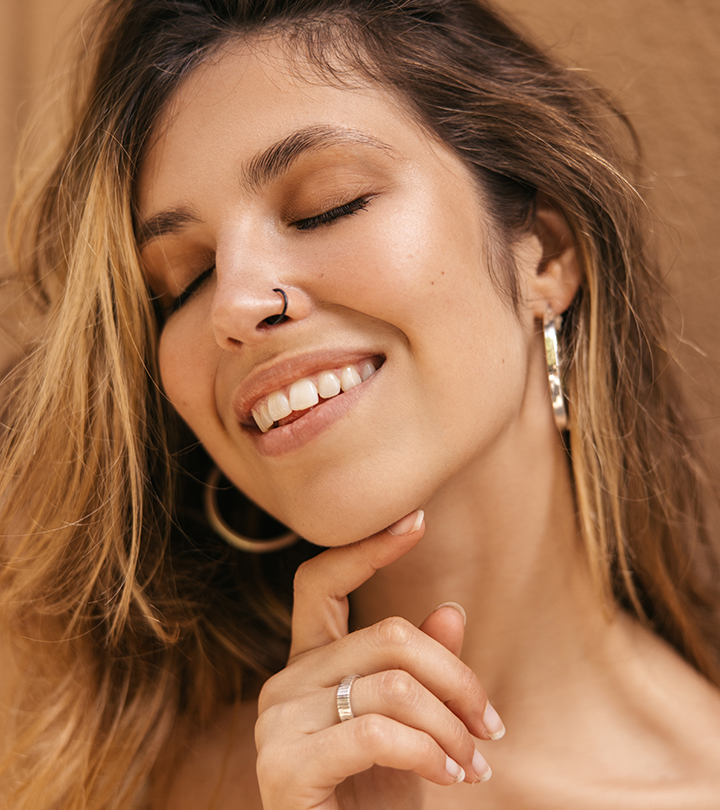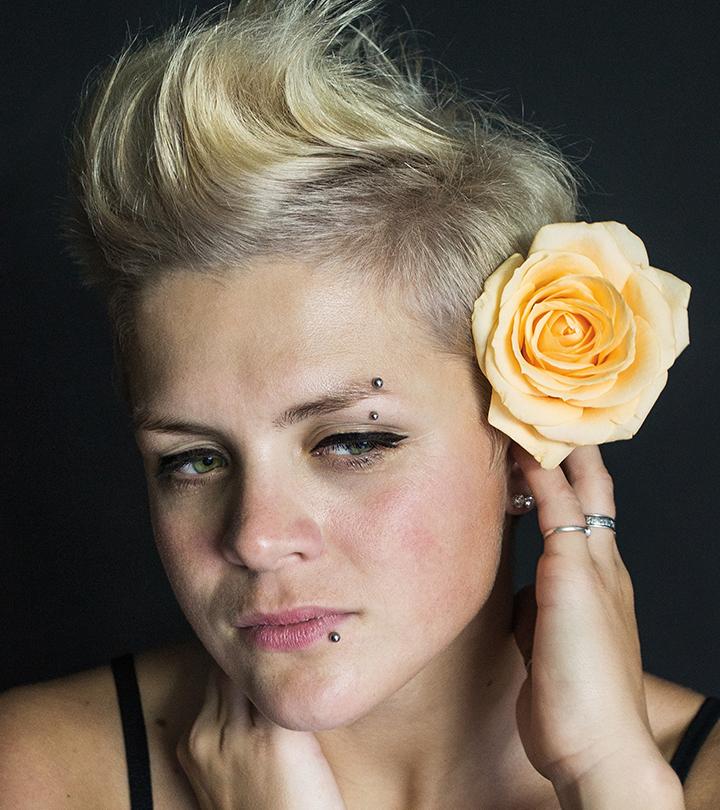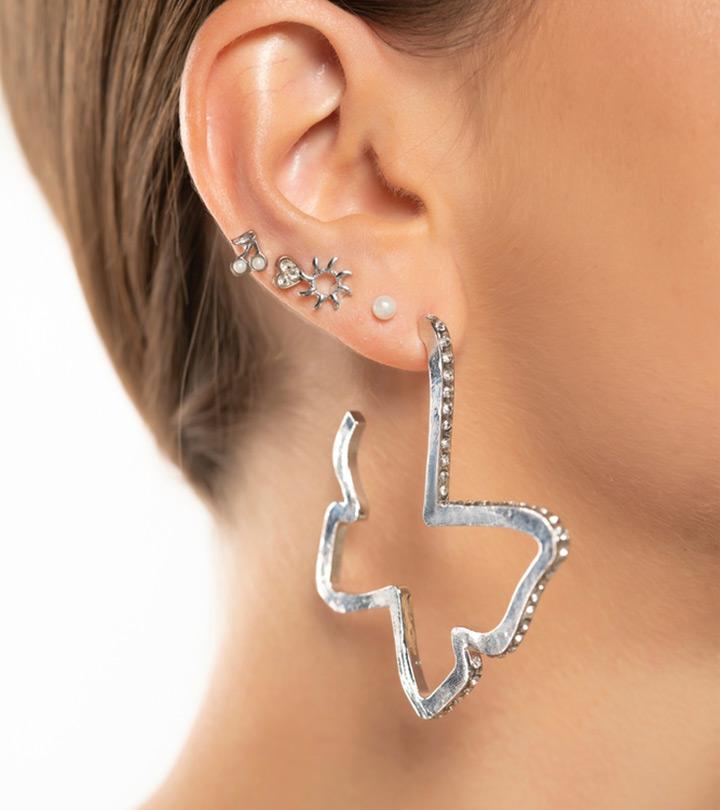Belly Button Piercing Gauge And Conversion Charts
Don't guess, choose the perfect gauge for a flawless piercing!

Image: Shutterstock
Are you ready to rock that belly button piercing you have been dreaming of? If so, you will need to figure out the belly button piercing gauge size to get the look you are going for. But, hold on a second – what exactly are piercing gauge sizes? Simply put, these measurements indicate the thickness of the jewelry used in piercings. Whether you are a seasoned piercing pro or a newbie, it is essential to know the appropriate gauge size so you can strut your stuff in style and comfort. In this article, we will take a closer look at belly button piercing gauge sizes and provide you with conversion charts to help you decipher the measurements. So, let us get started!
In This Article
Importance Of Knowing The Gauge Size For A Belly Button Piercing
Knowing the gauge for a belly button piercing is crucial to ensure that you get a proper fit. A belly button piercing gauge refers to the thickness of the jewelry, impacting comfort and risk of complications. Proper gauge also ensures proper healing and reduces the risk of infection or irritation. Choosing the wrong gauge can also lead to discomfort, migration, or rejection of the piercing. It is essential for both initial piercing and when changing jewelry to maintain the health and aesthetics of the piercing.
 Quick Tip
Quick TipBefore selecting the perfect belly jewelry, it is essential to establish your preferred length for optimal comfort and style. In the following section, check out how to determine the ideal length, ensuring your belly adornment complements your unique physique flawlessly.
How To Figure Out Your Preferred Length For Belly Jewelry
Establishing your preferred length for belly jewelry involves a few key steps and considerations. Let’s break it down:
Belly Jewelry Length Measurement:
1. Measure Your Piercing
Use a measuring tape or a piece of string to measure the distance between the entry and exit points of your belly piercing. Make sure to measure in a straight line, without bending the tape or string.
2. Determine Your Preferred Length
Consider your comfort and style preferences. Some people prefer shorter lengths that sit snugly against the skin, while others may prefer longer lengths that dangle slightly.
3. Account For Swelling Or Pregnancy
If you are pregnant or anticipate any swelling due to hormonal changes or other factors, you may want to choose a slightly longer belly jewelry length to accommodate this.
4. Consult With Your Piercer
Your piercer can provide valuable insights and recommendations based on your anatomy and piercing placement. They can help ensure that your chosen length will fit well and be comfortable.
Length Conversion Chart:
Here is a simple conversion chart to help you convert between different units of length:
- 1 inch = 2.54 centimeters
- 1 centimeter = 0.39 inches
- 1 inch = 25.4 millimeters
- 1 millimeter = 0.039 inches
Ball Size Conversion Chart:
When selecting belly jewelry, you will often need to consider the size of the balls or decorative ends. Here is a basic conversion chart for ball sizes:
- 1 inch = 25.4 millimeters
- 1 millimeter = 0.039 inches
Custom Clasp Sizes:
If you are opting for custom-made belly jewelry or require a specific clasp size for comfort or aesthetic reasons, it is essential to communicate your preferences clearly with the jeweler or piercer. They can create a piece tailored to your needs, ensuring a perfect fit and style.
Bananabell Size Guide:
Bananabells, also known as curved barbells, are a popular style for belly jewelry. They come in various lengths and thicknesses. Here is a general size guide:
- Length: Typically ranges from 6mm to 16mm, with 10mm being a common standard length.
- Thickness (Gauge): Common gauges include 14G (1.6mm) and 16G (1.2mm), with 14G being the standard for most belly piercings.
Pregnancy/Maternity Belly Button Ring Size Information:
During pregnancy, belly piercings may change due to abdominal expansion and skin stretching. Here are some considerations for choosing maternity belly button rings:
1. Flexible Materials: Opt for belly jewelry made from flexible materials like PTFE or BioFlex, which can accommodate changes in belly size without causing discomfort.
2. Longer Lengths: Choose belly rings with longer lengths to accommodate belly growth during pregnancy. A length of 14mm or more is often recommended.
 Quick Tip
Quick Tip3. Avoid Dangling Styles: Although jewelry styles differ from person to person, dangling belly rings may become uncomfortable or pose a risk of snagging as your belly grows. Opt for shorter, snug-fitting styles or pregnancy-specific belly rings designed for comfort.
When it comes to belly button piercings, understanding the piercing gauge sizes and conversion charts is paramount. The gauge size determines the thickness of the jewelry you pick, which affects your comfort and healing. Choosing the right gauge also prevents risks like migration and infection. Whether opting for a standard size or a custom piece, clarity on the lengths and gauges ensures a seamless journey into belly button piercing. Armed with this knowledge, you can confidently embark on your body adornment adventure, ensuring both safety and style in your piercing endeavors.
Frequently Asked Questions
What is the difference between a 14 and 16 gauge belly ring?
The difference between a 14 and 16 gauge belly ring lies in the thickness of the jewelry; 14G is thicker than 16G. Thicker belly button jewelry may provide a more substantial appearance but requires stretching the piercing, while thinner gauges are standard and easier to find.
Can you use a 12 gauge for belly button piercing?
Using a 12 gauge for a belly button piercing may be possible but typically requires stretching the piercing from the standard 14 or 16 gauge, which are common sizes and should be done gradually and under piercing professional guidance to minimize the risk of complications. Consult with a professional piercer for personalized advice on gauge size and stretching procedures.
What is the standard belly bar size?
The standard size for a belly bar, also known as a belly button ring or navel ring, is typically 10mm (⅜ inch) in length, with variations available to accommodate different anatomies and preferences.
Key Takeaways
- Understanding the gauge of belly button piercing jewelry or navel piercing jewelry is crucial for comfort, proper fit, and healing times, minimizing risks like discomfort or rejection.
- Determining the ideal length of body piercing jewelry involves considering personal preference, style, and potential changes like swelling or pregnancy, with guidance from a piercer.
- Pregnancy-specific belly button rings made from flexible materials and longer lengths accommodate abdominal changes and ensure comfort during pregnancy while minimizing risks.
Join the transformation as this video downsizes from 12mm to 8mm in this belly ring switch-up! Witness the process, from removing the old to embracing the new, in this exciting journey. Watch now!
References
Articles on StyleCraze are backed by verified information from peer-reviewed and academic research papers, reputed organizations, research institutions, and medical associations to ensure accuracy and relevance. Read our editorial policy to learn more.
- Jewelry Size And Style
https://safepiercing.org/jewelry-for-initial-piercings/
Read full bio of Asmita De
Read full bio of Shreya Mukherjee





